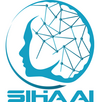Published: Oct, 14,2022 at 15:00 EAT.
Healthcare is shaping up in front of our eyes with advances in digital healthcare technologies such as artificial intelligence (AI), 3D printing, robotics, nanotechnology, etc. Digitized healthcare presents numerous opportunities for reducing human errors, improving clinical outcomes, tracking data over time, etc. AI methods from machine learning to deep learning assume a crucial function in numerous well-being-related domains, including improving new clinical systems, patient information and records, and treating various illnesses (Usyal et al. 2020; Zebene et al. 2019).
The AI techniques are also most efficient in identifying the diagnosis of different types of diseases. The presence of computerized reasoning (AI) as a method for improved medical services offers unprecedented occasions to recuperate patient and clinical group results, decrease costs, etc. The models used are not limited to computerization, such as providing patients, “family” (Musleh et al. 2019; Dabowsa et al. 2017), and medical service experts for data creation and suggestions as well as disclosure of data for shared evaluation building. AI can also help to recognize the precise demographics or environmental areas where the frequency of illness or high-risk behaviors exists. Researchers have effectively used deep learning classifications in diagnostic approaches to computing links between the built environment and obesity frequency (Bhatt et al. 2019; Plawiak et al. 2018).
AI algorithms must be trained on population-representative information to accomplish presentation levels essential for adaptable “accomplishment”. Trends, such as the charge for putting away and directing realities, information collection through electronic well-being records (Minaee et al. 2020; Kumar 2020), and exponential client state of information, have made a data-rich medical care biological system. This enlargement in health care data struggles with the lack of well-organized mechanisms for integrating and reconciling these data ahead of their current silos. However, numerous frameworks and principles facilitate summation and accomplish adequate data quantity for AI (Vasal et al. 2020).
The challenges in the operational dynamism of AI technologies in healthcare systems are immeasurable despite the information that this is one of the most vital expansion areas in biomedical research (Kumar et al. 2020). The AI commune must build an integrated best practice method for execution and safeguarding by incorporating active best practices of principled inclusivity, software growth, implementation science, and individual–workstation interaction. At the same time, AI applications have an enormous ability to work on patient outcomes. Simultaneously, they could make significant hazards regarding inappropriate patient risk assessment, diagnostic inaccuracy, healing recommendations, privacy breaches, and other harms (Gouda et al. 2020; Khan and Member 2020)…read more
